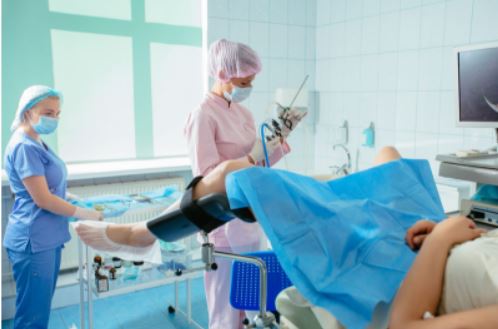What is Hysteroscopy & What is The Procedure For It By Dr. Mohit Saraogi
In this article, Dr. Mohit Saraogi who works in a Leading IVF Center in Mumbai talks about “What is Hysteroscopy & what is the procedure for it?”
If you’re looking for the top IVF Centre in Mumbai to help you start a family, Saraogi Hospital can help you. We provide a comprehensive range of infertility treatments all under one roof. We offer world-class treatment facilities at an affordable price with a high success rate.
Hysteroscopy is an outpatient procedure used to look inside the uterus and treat certain conditions that affect the uterus and fall within the scope of OB/GYN. Hysteroscopy is a procedure used to evaluate the internal anatomy of the uterus.
Hysteroscopy is often the first step in treating fibroids, endometriosis, abnormal bleeding, and abnormal intrauterine growth. It can also be used to evaluate an abnormal uterus and to treat disorders that are not amenable to other forms of treatment.
Hysteroscopy is a minimally invasive procedure that uses a fiber-optic camera attached to a lighted tube called a hysteroscope to look at the inside of the uterus. It is done under general anesthesia. Here is everything you need to know about the procedure, indications, and risks.
Contents [hide]
How is Hysteroscopy Performed?
Mumbai-based Dr. Mohit Saraogi a premium IVF doctor says that the procedure is typically performed in an outpatient setting, but in some cases, it can be done in a hospital. Hysteroscopy is usually done with the patient lying on their back with their knees bent and feet flat. This allows for an unobstructed view of the womb from above.
The patient will be given general anesthesia that lasts about five minutes or longer, depending on the length of time needed for the procedure. At this point, the doctor will insert a thin metal rod into the woman’s vagina to help her relax and facilitate penetration by the hand-held scope used during the procedure.
The doctor then inserts the hysteroscope through a small incision near the cervix and after placing lubricant around it, uses it to look at different parts of the uterus. One end of it has a light source inside while another has a camera lens outside of it that captures images that are transmitted to a monitor near where they are being viewed. The doctor will then use these images to decide on further treatment options.
Indications for Hysteroscopy
- Endometriosis
- Fibroids
- Premenstrual syndrome
- Abnormal bleeding
- Unusual intra-uterine growth
- Uterine abnormalities (including polyps, fibroids, and adhesions)
Risks of Hysteroscopy
Hysteroscopy is a low-risk, non-invasive procedure that is often used to evaluate the progress of treatments for gynecological conditions. There are a few risks associated with this procedure. The most common risks include:
- Pain during the procedure
- Bleeding
- Infection
- Damage to the organs inside the uterus
How Long Does Hysteroscopy Take?
- The procedure takes about 15-20 minutes.
- Because the procedure is minimally invasive and uses general anesthesia, patients may be able to return home the same day of the procedure.
- Hysteroscopy generally takes less time than a Pap smear, which typically takes one hour or more notes Dr. Mohit Saraogi one of the best IVF specialists in Mumbai.
Procedure
Before you undergo a hysteroscopy, it is important to prepare your body so you have a safe and healthy experience. It is not recommended that you eat or drink anything for six hours before the procedure. Any food or beverage can cause bloating, which leads to a compromised airway during the procedure. If you are taking blood thinners such as warfarin (Coumadin) or aspirin, make sure to discuss your intake with your doctor two weeks before.
It is important that you tell your doctor about any medications that are being taken and allergies that may be present. On the day of the procedure, you will likely take antibiotics to prevent infection. This area of the body can be swollen and tender for up to 24 hours after the procedure, so be sure to rest after surgery. It is also recommended that you wear loose-fitting clothing until the swelling subsides in order to avoid complications opines Dr. Mohit Saraogi a top IVF surgeon in Mumbai.
Post-Hysteroscopy Care
Post-hysteroscopy care includes:
- Follow up visits to monitor healing and reproductive health
- Taking medication as prescribed to prevent infection, reduce pain, and help with bleeding
- Maintaining a healthy diet and lifestyle
- Not having sexual intercourse until advised by your healthcare provider
- Avoiding or limiting heavy lifting or strenuous physical activity for at least one week
- Returning to regular activities gradually over the course of four weeks
Conclusion
Hysteroscopy is a diagnostic procedure that allows physicians to examine the inside of the female reproductive organs. It is typically performed with a hysteroscope, which is inserted into the vagina. The procedure may be used to confirm a diagnosis of uterine fibroids, cervical cancer, endometrial cancer, ovarian cysts, and other conditions.


